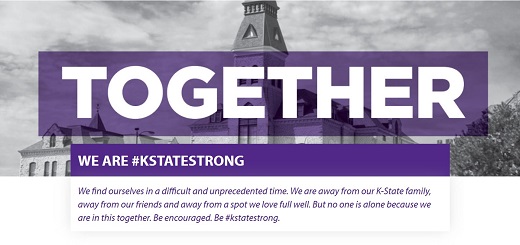05/20/20
K-State Current - May 20, 2020
K-State Current is a weekly news update for the Kansas Board of Regents to apprise the Regents on a few of the many successes and achievements made by K-State faculty, staff and students.
K-State News
Visit K-State’s “We Are #KStateStrong” site to view brief videos designed to keep the K-State family engaged, connected and inspired during these challenging times.
K-State veterinary faculty target new ways to confront COVID-19
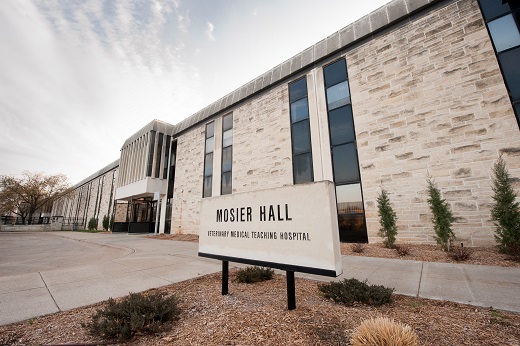 Scientific work continues in the College of Veterinary Medicine at Kansas State University to better understand and confront the virus that causes the COVID-19 disease.
Scientific work continues in the College of Veterinary Medicine at Kansas State University to better understand and confront the virus that causes the COVID-19 disease.
Faculty, staff, students and postdocs in the college are utilizing their respective areas of expertise to explore different aspects of the novel coronavirus, which reached pandemic levels this spring.
"Our work ranges from physical protection from the virus to the creation of new diagnostics for detection of the virus and serology testing to detect antibodies," said Derek Mosier, head of the diagnostic medicine and pathobiology department. "Our faculty are also working to develop new therapeutics and vaccines. Plus, we have faculty who are conducting detailed studies on the pathogenesis and features of the virus. The more we understand, the better we will be able to control the virus."
A pair of researchers in the diagnostic medicine department recently licensed a technology that may lead to the production of an antiviral drug to treat coronaviruses and noroviruses. Yungeong Kim and Kyeong-Ok "KC" Chang, virologists at K-State, collaborated with William Groutas, a medicinal chemist at Wichita State University. Jointly, they have been using National Institutes of Health grants to work on human norovirus therapeutics. They recently received an additional $3.7 million grant to develop antiviral drugs to treat Middle East respiratory syndrome, better known as MERS human coronavirus. Their work extends to other human viruses that have a similar viral protease, such as rhinoviruses and the newly emerged human coronavirus causing COVID-19.
No antiviral drugs are yet available for human norovirus or coronaviruses, which include SARS, MERS and SARS-CoV-2, the virus that causes COVID-19, but this could change as a result of the license agreement between K-State and Cocrystal Pharma Inc., a clinical stage biotechnology company that develops novel antiviral therapeutics. So far, Chang and Kim have agreements with Cocrystal for multiple therapeutic candidates. The company intends to pursue research and development of theses antiviral compounds, including preclinical and clinical development.
Another K-State researcher and professor, Waithaka Mwangi, has worked with his team to develop three patent-pending experimental immunogens to be evaluated for the ability to induce protection against SARS-CoV-2. Two candidates are designed for eliciting mucosal immunity through intranasal delivery — live-vectored replicons or live-vectored viral nucleic acid — and one is for parenteral immunization — a recombinant protein.
"My lab is scaling up these experimental immunogens in readiness for safety, immunogenicity and protective efficacy testing," Mwangi said.
Kansas State University has signed a nonclinical evaluation agreement with the National Institute of Allergy and Infectious Diseases for the materials to be evaluated.
"We are also working with Dr. Juergen Richt to test the materials at K-State's Biosecurity Research Institute," Mwangi said. "Plus, we are working on generation of therapeutic humanized-neutralizing antibodies. We hope these efforts will help produce a robust intervention against COVID-19."
Richt, a Regents distinguished professor and KBA eminent scholar, is director of the Center of Excellence for Emerging Animal Diseases, or CEEZAD, at K-State.
K-State's Molecular Research and Development team, a part of the Kansas State Veterinary Diagnostic Laboratory, has been working on a multiplex real-time PCR assay — a widely used molecular biology method — for faster detection of the SARS-CoV-2 virus.
"The current CDC-recommended protocol involves three molecular targets that are tested individually," said Jianfa Bai, professor and director of the team. "This means each sample requires three PCR reactions. The multiplex real-time PCR assay developed by the Molecular Research and Development team uses a single PCR reaction for each sample."
Bai said preliminary data generated using a plasmid control and an RNA sample extracted from a SARS-CoV-2 isolate indicated that the multiplex assay has similar analytical sensitivity but better linearity, and it has better repeatability on low concentration samples, as compared to the CDC assay.
"The multiplex assay is under validation with a number of positive and negative samples from human patients," Bai said. "An emergency use authorization application has been filed with the FDA for the assay, which will speed up the detection process three times that of the CDC protocol."
Roman Pogranichniy, an associate professor of virology, said team members in the Kansas State Veterinary Diagnostic Lab led by Jamie Henningson are working with Richt on developing diagnostic assays for SARS2-CoV-2 to detect antibodies and virus and to understand the virus's epidemiology and pathogenesis better.
Richt said CEEZAD is working to develop preclinical models and diagnostics, as well as treatments and subunit vaccines, that will be effective against COVID-19. This work will be conducted at K-State's Biosecurity Research Institute, the only facility on campus in which work with the infectious SARS-CoV-2 can be performed.
"Researchers at K-State have access to one of the nation’s premier biosafety laboratories, the BRI, where research on noro- and coronaviruses can be done safely," said Peter Dorhout, vice president for research. "This facility is an investment by the state and the university. The BRI professional staff also train the next generations of biosafety and biosecurity researchers who will discover the vaccines and treatments of not just the human and animal diseases we face today, but those that will emerge in the future."
The therapeutic and vaccine research is taking place in collaboration with various academic and industry partners. Richt was recently appointed to an ad hoc expert group established by the World Health Organization. The WHO is tasking the group to develop preclinical models of COVID-19 that can be used for the evaluation of vaccines and therapeutics against the disease.
Although reports on the effects of COVID-19 have to date been focused on humans, there have been recent reports that the virus has been transmitted from humans to dogs and cats, and also to large cats in zoos. But Richt said there is currently no information that suggests that pets might be a source of infection for people with the coronavirus that causes COVID-19.
"That is most likely due to reverse zoonoses, meaning COVID-19 human patients transmitted it to the companion animals," Richt said. "CEEZAD's effort is designed to marshal the full range of the center's research expertise against COVID-19. CEEZAD is fortunate to have such dedicated employees with a wide array of expertise in infectious diseases."
Model of beef cattle, transportation industries as critical infrastructures reveals vulnerabilities
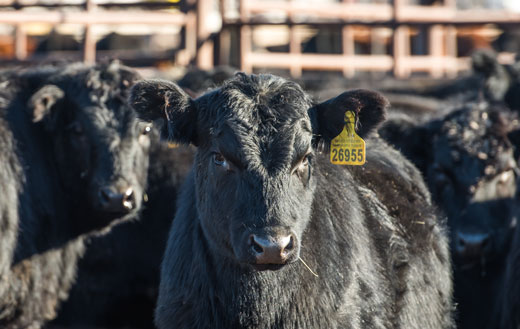 An interdisciplinary team of Kansas State University researchers developed a computer simulation that revealed beef supply chain vulnerabilities that need safeguarding — a realistic concern during the COVID-19 pandemic.
An interdisciplinary team of Kansas State University researchers developed a computer simulation that revealed beef supply chain vulnerabilities that need safeguarding — a realistic concern during the COVID-19 pandemic.
Caterina Scoglio, professor, and Qihui Yang, doctoral student, both in electrical and computer engineering, recently published "Developing an agent-based model to simulate the beef cattle production and transportation in southwest Kansas" in Physica A, an Elsevier journal publication.
The paper describes a model of the beef production system and the transportation industry, which are interdependent critical infrastructures — similar to the electrical grid and computer technology. According to the model, disruptions in the cattle industry — especially in the beef packing plants — will affect the transportation industry and together cause great economic harm. The disruptions modeled in the simulation share similarities with how the packing plants have been affected during the COVID-19 pandemic.
"When we first started working on this project, there was a lot of emphasis on studying critical infrastructures; especially ones that are interdependent, meaning that they need to work together with other critical infrastructures," Scoglio said. "The idea is if there is a failure in one of the systems, it can propagate to the other system, increasing the catastrophic effects."
The study included a variety of viewpoints to create a realistic and integrated model of both systems. Co-authors on the paper include Don Gruenbacher, associate professor and department head of electrical and computer engineering; Jessica Heier Stamm, associate professor of industrial and manufacturing systems engineering; Gary Brase, professor of psychological sciences; Scott DeLoach, professor and department head of computer science; and David Amrine, research director of the Beef Cattle Institute.
The researchers used the model to evaluate which supply chain components were more robust and which were not. They determined that packing plants are the most vulnerable. Scoglio said that recent events in the middle of the COVID-19 pandemic raise important issues about how to safeguard the system.
"An important message is that after understanding the critical role of these packers, we need to decide how we could protect both them and the people who work there," Scoglio said. "While the plants are a critical infrastructure and need to be protected, taking care of the health of the workers is very important. How can we design a production process that can be flexible and adaptable in an epidemic?"
According to the paper, the beef cattle industry contributes approximately $8.9 billion to the Kansas economy and employs more than 42,000 people in the state. Since trucks are needed to move cattle, any disruption in either cattle production or transportation almost certainly would harm the regional economy, Scoglio said.
"Packers need to be considered as a critical point of a much longer supply chain, which needs specific attention to make sure it will not fail and can continue working," Scoglio said. "Beef packers are a critical infrastructure in the United States."
The project was supported by the National Science Foundation and focused on southwest Kansas, but the researchers acknowledge that cattle come from outside the region and interruptions may have larger national effects.
K-State Faculty Highlights
Biologist receives national funding for cervical cancer research
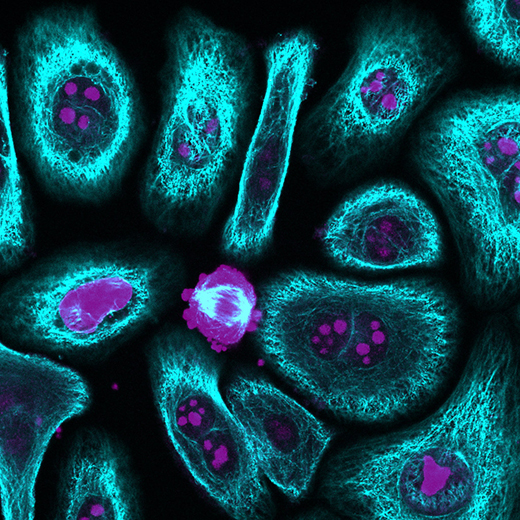 More than half a million cervical cancers are diagnosed worldwide each year. Although most of them can be treated effectively with a drug called Cisplatin, some are resistant to it. A Kansas State University biologist is working to understand Cisplatin-resistant cervical cancers.
More than half a million cervical cancers are diagnosed worldwide each year. Although most of them can be treated effectively with a drug called Cisplatin, some are resistant to it. A Kansas State University biologist is working to understand Cisplatin-resistant cervical cancers.
Nicholas Wallace, assistant professor in the Division of Biology, studies human papillomavirus, or HPV, a common virus that causes almost all cervical cancers. He has received a $454,466 R15 Academic Research Enhancement Award from the National Cancer Institute of the National Institutes of Health for his study, "HPV Oncogenes Dysregulate Translesion Synthesis."
According to Wallace, the tumors that do not respond to Cisplatin are quite deadly. But if Cisplatin resistance were identified early, more effective treatment options could be used. His team is working to discover the unique features of Cisplatin-resistant cancers.
"Our goal is to help doctors identify cervical cancers that would respond better if treated with a different approach," Wallace said. "Sadly, there is currently no established method to distinguish cervical cancers that will respond to Cisplatin from those that will not."
Wallace's team has already identified one way cervical cancers become resistant to Cisplatin. Cancerous cervical cells can change how they respond to damage caused by sunlight, a process called translesion synthesis. The changes protect them against Cisplatin.
The initial studies were supported by the Johnson Cancer Research Center at Kansas State University with a gift from the late Les Clow. The National Cancer Institute award will help them expand on this research.
"We hope our efforts will improve the lives of women fighting cervical cancer around the world," Wallace said.
NIH Academic Research Enhancement Awards support small-scale research projects at educational institutions that provide baccalaureate or advanced degrees for a significant number of the nation's research scientists to support meritorious research, expose students to research and strengthen the research environment of the institution.
The Johnson Cancer Research Center in the College of Arts and Sciences at Kansas State University supports and advances cancer research and education with competitive award programs funded through private donations.
Excellence recognized: Presidential Awards recognize three for leadership, teaching
Excellence and dedication are earning a Kansas State University department head, horticulture teacher and biochemistry graduate teaching assistant the university's 2020 Presidential awards.
 Michael Young, professor and head of the psychological sciences department, is the recipient of the Presidential Award for Outstanding Department Head. Chad Miller, associate professor of horticulture and natural resources, and Ashish Kumar, doctoral student in biochemistry, are recipients of the Presidential Award for Excellence in Undergraduate Teaching.
Michael Young, professor and head of the psychological sciences department, is the recipient of the Presidential Award for Outstanding Department Head. Chad Miller, associate professor of horticulture and natural resources, and Ashish Kumar, doctoral student in biochemistry, are recipients of the Presidential Award for Excellence in Undergraduate Teaching.
Each award includes a $5,000 honorarium sponsored by the university president's office and Curtin Property Company, a real estate development firm with offices in Manhattan and Kansas City.
"Over a quarter-century ago, the Curtin Property Company founded a unique partnership with the Kansas State University president. The goal was to create a special focus on Excellence among K-States outstanding faculty and leaders," said Chris Curtin, company president. "At the donor's request, the Presidential Awards of Excellence name was selected, and the program has since honored scores of extraordinary teachers and leaders changing the lives of their students and illuminating the spirit of excellence of the K-State faculty. The Curtin Property Company, it's numerous K-State graduates and its Manhattan associates at Georgetown Apartment Homes and Westchester Park Apartments are pleased to honor the 2020 Presidential Awards of Excellence winners."
Young joined K-State in 2012 as head of the psychological sciences department. Under his leadership, the department has thrived in teaching, research and more. The department's extramural funding has increased significantly, including landing a $10.6 million grant from the National Institutes of Health's COBRE program to establish the Cognitive and Neurological Approaches to Plasticity research center. To encourage teaching and research excellence by the department's graduate students, Young helped increase stipends for graduate teaching and research assistants, and he helped create new awards to recognize excellence in these areas by graduate students.
Supporting faculty is a big part of Young's job. He helps mentor the department's new tenure-track faculty. Several psychological sciences faculty members have earned major university awards for their work under Young's leadership, including the Coffman Chair for Distinguished Teaching Scholars, Presidential Award for Excellence in Undergraduate Teaching, and the Commerce Bank and W.T. Kemper Foundation awards for Distinguished Graduate Faculty and Outstanding Teaching. Refurbishing the department's classrooms and reception areas also have been a Young priority.
Young credits his success as a department head to building trust with faculty, staff and students.
"I work hard to be approachable, which helps me to react quickly to issues as they arise," Young said. "I also strive to be fair and supportive. Building on a culture of trust makes it easier to sustain excellent teaching and research activity because the faculty know that my goal is to support their success."
With the university's switch to remote operations, Young has made it a point to be accessible.
"The past few weeks have been especially challenging for me because a key part of my success is checking in regularly with the younger and pre-tenure faculty who may be reticent to just pop into the department head's office," he said. "I use synchronous Zoom meetings with faculty, rely on email when I must, and even pick up the phone for the occasional chat with a faculty member — an exceedingly rare event before the pandemic."
 Miller enjoys teaching — and it shows. Since joining K-State in 2011, he has won several major national honors for his teaching, including the U.S. Department of Agriculture's Food and Agricultural Sciences New Teacher Award, North American Colleges and Teachers of Agriculture Educator Award, and the American Public and Land-Grant Universities' inaugural Innovative Teaching Award. He also has earned university, college and departmental awards for teaching, advising and service.
Miller enjoys teaching — and it shows. Since joining K-State in 2011, he has won several major national honors for his teaching, including the U.S. Department of Agriculture's Food and Agricultural Sciences New Teacher Award, North American Colleges and Teachers of Agriculture Educator Award, and the American Public and Land-Grant Universities' inaugural Innovative Teaching Award. He also has earned university, college and departmental awards for teaching, advising and service.
Along with teaching seven horticulture courses each year, Miller advises around 30 horticulture students and is co-advisor to the Horticulture Club and advises the Pi Alpha Xi chapter, the honor society for horticulture.
"I have always liked learning and enjoy assisting others in their learning pursuits," Miller said. "It is very rewarding to get to know my students and see their progress over the course of a semester and their time at K-State, especially since I have the opportunity to interact with the students in multiple courses and as advisees. Another great enjoyment about teaching is that I am continually learning about the discipline, learning new techniques and methods to incorporate into the classroom to ideally assist in my teaching abilities."
With the switch to remote learning, Miller said communication and flexibility have been key in helping his students adjust to the change.
"I created some simple activities to assist students with the transition to the online/remote teaching platform," he said. "I also work to maintain my excitement and genuine interest and passion for horticulture in the course content. I am working to incorporate a variety of activities and methods for presenting materials and for evaluation so things do not become too mundane, with the goal of keeping my students engaged."
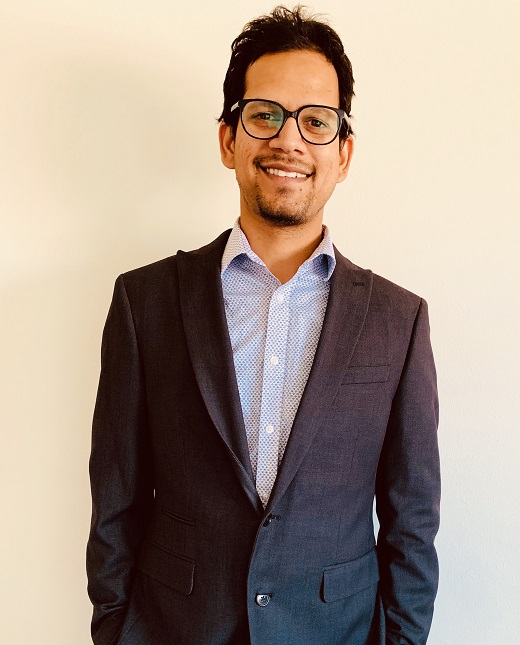 Kumar has been a graduate teaching assistant for the biochemistry and molecular biophysics department since 2016 and consistently earns high marks from students for his teaching. Courses he has been involved with include General Biochemistry Lab and Introduction to Organic and Biochemistry, both of which serve 50 or more students each semester. He is in charge of ensuring the lab courses have the appropriate equipment and materials. He also has created a new experiment for the General Biochem Lab course based on his own research findings.
Kumar has been a graduate teaching assistant for the biochemistry and molecular biophysics department since 2016 and consistently earns high marks from students for his teaching. Courses he has been involved with include General Biochemistry Lab and Introduction to Organic and Biochemistry, both of which serve 50 or more students each semester. He is in charge of ensuring the lab courses have the appropriate equipment and materials. He also has created a new experiment for the General Biochem Lab course based on his own research findings.
"Apart from concentrating on giving lectures, demonstrating labs, quizzes, etc., I try to create that kind of environment in the class where all the students can know each other more than just by their names," Kumar said. "And when this happens, interactive sessions with students become so fruitful. For me, this is the most enjoyable part about teaching."
Kumar was prepared for the recent switch to remote learning. A few years ago, he was in charge of taping lectures and creating video primers on lab experiments to make the General Biochemistry Lab course a K-State Online offering.
His work as a teacher and researcher has impressed Phil Klebba, university distinguished professor of biochemistry and biophysics. Kumar is a member of Klebba's lab and has served as a GTA for Klebba several times.
"Over the past few years, partly because of his GTA activities, Ashish has become expert in many fundamental areas of biochemistry," Klebba said. "This expertise makes him both an insightful researcher and a highly competent teacher of undergraduate students."
Kumar was recently selected as one of K-State's top graduate researchers and presented his work at the 17th annual Capitol Graduate Research Summit in Topeka. His poster presentation on his work to develop fluorescent molecular sensors for the sensitive detection of important bacterial byproducts or metabolitesearned Kumar a $500 scholarship.
For his teaching and his research, the biochemistry and molecular biophysics department has recognized Kumar with its Charlie Hedgcoth Jr. and Phillip Nordin Graduate Memorial awards for Excellence in Graduate Research Teaching and Excellence in Graduate Research.
Kumar plans to complete his doctoral studies in fall 2020 and would like to work as a postdoctoral fellow in the next stage of his research career.
K-State Student News
K-State student newspaper, yearbook and magazine staffers earn state media honors
 The Kansas State Collegian, 2019 Royal Purple yearbook and Manhappenin' magazine, all part of Kansas State University's Collegian Media Group, all received Gold All-Kansas ratings from Kansas Collegiate Media. The Gold All-Kansas rating is the highest given by the association, which is composed of student media representing both the two and four-year schools in Kansas.
The Kansas State Collegian, 2019 Royal Purple yearbook and Manhappenin' magazine, all part of Kansas State University's Collegian Media Group, all received Gold All-Kansas ratings from Kansas Collegiate Media. The Gold All-Kansas rating is the highest given by the association, which is composed of student media representing both the two and four-year schools in Kansas.
Collegian Media Group students also earned 29 individual awards. The Collegian Media Group is part of the A.Q. Miller School of Journalism and Mass Communications in the College of Arts and Sciences.
The following students earned awards from Kansas Collegiate Media:
Alex Todd, fall 2018 bachelor's graduate in information systems, Andover, first place in news/event photography, first place in sports/action photography and honorable mention in sports/action photography, all for the Royal Purple; Katelin Woods, senior in theatre and mass communications, Clearwater, third place in special section and honorable mention in social media storytelling, both for the Kansas State Collegian; Bailey Britton, sophomore in mass communications and English, Colby, first place in news/event writing, Kansas State Collegian; Rafael Garcia, May 2019 bachelor's graduate in mass communications, Emporia, first place in news/event writing, Kansas State Collegian.
From Greater Kansas City: Olivia Rogers, senior in political science, Gardner, honorable mention in social media storytelling, Kansas State Collegian; Mary Beth Karlin, sophomore in pre-professional elementary education, Lenexa, second place in feature writing, Manhappenin' magazine; Mackenzie Smith, December 2019 bachelor's graduate in apparel and textiles, Olathe, first place in bare feature photos, Manhappenin' magazine; Hallie Everett, sophomore in mass communications, Overland Park, first place in news event writing, Royal Purple; Madi Fleming, freshman in interior design, Overland Park, second place in feature writing, Manhappenin' magazine; Julie Freijat, sophomore in mass communications, Overland Park, honorable mention in illustration and graphics, Kansas State Collegian; Courtney Honn, sophomore in pre-professional elementary education, Overland Park, third place in headline design, Royal Purple; Logan Wassall, senior in mass communications, Overland Park, first place in sports/action photography for the Kansas State Collegian and third place in sports/action photography for the Royal Purple; and Kaylie McLaughlin, senior in mass communications, Shawnee, third place in special section and honorable mention in social media storytelling, both for the Kansas State Collegian.
Halle Lang, sophomore in fine arts, Hays, first place in bare feature photos and honorable mention for feature photography, Manhappenin' magazine; Olivia Bergmeier, senior in mass communications, Hutchinson, second place in feature photography for the Royal Purple and honorable mention in illustration and infographics for the Kansas State Collegian; Katie Harbert, senior in agricultural communications and journalism, Kingman, honorable mention in page design, Royal Purple; Dylan Connell, freshman in fine arts, Manhattan, first place in news/event photography, Kansas State Collegian; Natalie Jaeger, May 2019 bachelor's graduate in mass communications, Mound City, third place in page design, Manhappenin' magazine; Brianna Womack, senior in mass communications, Silver Lake, second place in news event writing, Royal Purple; Dene Dryden, senior in English, Stockton, third place in feature writing, Collegian; Rachael Hogan, December 2019 bachelor's graduate in mass communications, Topeka, third place in special section, Kansas State Collegian.
From Wichita: Leah Brock, junior in mass communications, first place in page design, Royal Purple; Hannah Greer, summer 2019 bachelor's graduate in mass communications, honorable mention for feature photography, Manhappenin' magazine; Natalie Leonard, senior in mass communications, first place in feature writing, Manhappenin' magazine; and Kate Torline, junior in mass communications, first place in bare feature photos and honorable mention for feature photography, Manhappenin' magazine.
From out of state: Abby Pfannenstiel, senior in apparel and textiles, Kansas City, Missouri, first place in table of contents design and second place in fall 2019 cover design, Manhappenin' magazine; Caroline Fullerton, junior in agricultural economics, Platte Woods, Missouri, first place in headline design, Manhappenin' magazine; and Ashley Read, senior in fine arts, Austin, Texas, first place in cover design-2019 Insight, Royal Purple.
From out of country: Alanud Alanazi, senior in architectural engineering, Saudi Arabia, honorable mention in news/event photography, Royal Purple.
The Collegian Media Group shares the stories of Kansas State University and Manhattan with communities on and off campus through its three student run publications: the Kansas State Collegian newspaper, Royal Purple yearbook and Manhappenin' magazine. Collectively, the publications are among the oldest and most decorated collegiate publications in the nation. The Royal Purple first appeared in 1909 but was preceded by class books in 1891 and in 1896 K-State celebrated the inaugural edition of the campus newspaper, originally named The Student Herald. Started in 2016, Manhappenin' magazine is the newest publication in the Collegian Media Group.
